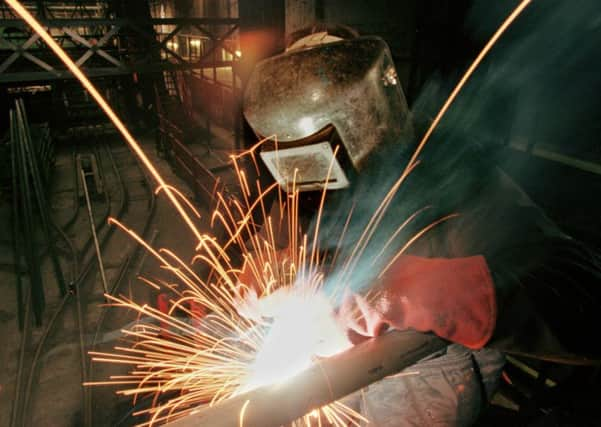Manufacturers hit two-year exports high post-Brexit
This article contains affiliate links. We may earn a small commission on items purchased through this article, but that does not affect our editorial judgement.


The latest industrial trends survey from the CBI employers’ lobby group said an index measuring export orders reached its highest since August 2014, at a net minus 6, an improvement on minus 22 in July.
A slide in sterling appeared to be fuelling stronger overseas demand, with chemical manufacturers benefiting in particular from rising orders, the CBI report said.
Advertisement
Hide AdAdvertisement
Hide AdThe pound slumped to 30-year lows against the US dollar after the Brexit vote on 23 June, and also slid sharply against the euro. About 40 per cent of British exports to go the EU.
The survey said total factory orders surpassed expectations, falling to a net minus 5 in August, down from minus 4 in July, but comfortably above the City’s more pessimistic forecasts of a fall of minus 10.
However, less positively, the CBI said the average prices manufacturers expected to charge over the next three months rose to plus 8 in August from plus 5 in July – their highest since February 2015.
The likely price rises are seen as being driven by the rising cost of imported raw materials for British businesses. Anna Leach, CBI head of economic analysis and surveys, said: “It’s good to see manufacturing growth coming in stronger than expected, and some signs that the fall in sterling is helping to bolster export orders.
“But the pound’s weakness is a double-edged sword, as it benefits exporters but also pushes up costs and prices.”
Leach added: “The most significant effects of the vote to leave the EU will flow over the medium-to-long-term. Therefore, firms need to see ambitious decisions in the (governent’s) Autumn Statement that will secure the UK’s economic future as changes to trade, regulation and access to skills loom on the horizon.”
Howard Archer, chief UK economist at IHS Global Insight, said the latest data provided “some reassurance” on the manufacturing sector, which accounts for about 12 per cent of the UK economy.
It also follows unexpectedly positive figures recently on UK employment and retail sales despite the uncertainty following the Brexit vote.
Advertisement
Hide AdAdvertisement
Hide Ad“Overall, the August CBI industrial trends survey supports hopes that the economy can keep growing in the third quarter, despite the heightened uncertainty after the Brexit vote,” Archer said.
“Third quarter growth hopes have been lifted by robust retail sales in July and the CBI survey suggests that manufacturing output could hold up better than had been feared.”
The Office for National Statistics said recently that UK manufacturing output fell by 0.3 per cent in June, an improvement on a 0.6 per cent contraction in May amid uncertainty in the run-up to the EU vote.
